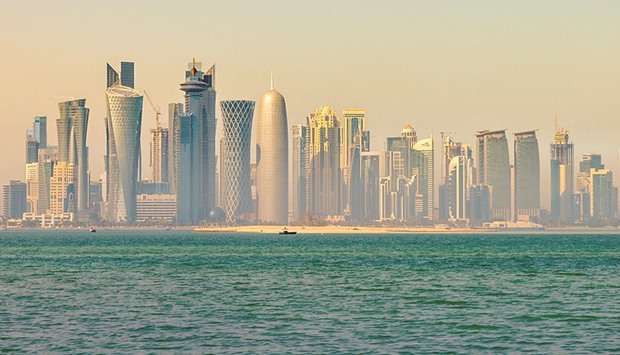It’s March, which means that it’s spring here in Qatar. Arguably, however, in this country it is a less joyous time of year than it is elsewhere in the globe. Spring for us means that the weather is getting steadily hotter, and we’re leaving behind the pleasantly cool temperatures of winter.
Elsewhere in the world, spring is a time of year which is filled with great optimism. In places like northern Europe, Japan and Canada, much of the land has been smothered by snow and ice for the preceding few months. Finally, in spring, the weather begins to turn milder, the snow starts retreating, and green shoots begin to appear.
As the days wear on, the length of daylight rapidly increases and the sun climbs steadily higher in the sky. Having lived in England for many years, I can tell you that going to work before the sun has risen and returning home when it had already set, is no fun. The few hours of daylight were always at a time I was tucked away in an office, which usually had no windows. It’s not really a wonder that many people suffer from Season Affective Disorder, and felt rather depressed in winter.
Spring was a brighter time of year, and with shoots emerging from the soil and buds appearing on many trees, it is little wonder that spring is associated with rebirth and renewal.
Having said all this, spring isn’t always a smooth and gradual transition from the weather of winter to that of summer. It is often more of a fight between the different types of weather, with winter winning on some days, but summer triumphing others.
In Sarajevo, Bosnia, the temperature on March 3 last year was 10C, but just 2 days later, the air never made it above freezing. In Chicago, USA, the temperature climbed to a balmy 23C on March 16, 2015, but 24 hours later, it failed to get above 7C. In Beijing it was a similar story, with 14C being the maximum on March 8, but only 5C the next day.
Not only does this changing in weather keep meteorologists on our toes, but it also makes sure everyone keeps their eye on the weather. Otherwise, there would be a few ‘wardrobe malfunctions’ with people wearing heavy coats on a balmy day, or shivering in a t-shirt while it is snowing.
The fighting weather types don’t only result in yo-yoing temperatures, but it also leads to some rather dramatic weather as well. North America is one of the best examples of this. For the majority of the winter, much of the continent is dominated by the cold air that digs south from Canada. However, during spring, warm, humid air from the Gulf of Mexico starts to gain intensity. The warm air makes regular surges northwards, forcing the cold air to retreat.
Where these two airmasses meet, is the setting for some of the most destructive weather that we see anywhere in the world. Huge thunderstorms develop that can bring torrential rain, damaging hail and devastating tornadoes.
It was these fighting airmasses that triggered the outbreak of severe weather that struck North America on February 23 and 24. The storms initially pummelled the southern states of the US, before slamming into the east coast. At least sixty tornadoes touched down in ten different states. The twisters raged from Texas to Pennsylvania, bringing panic and destruction.
One tornado slammed into Tappahannock in Virginia. The ferocious storm carved a 45-kilometre (28 mile) path and left 20 people injured. Another tornado struck an apartment building in Pensacola, Florida. Witnesses described the aftermath as a ‘war zone’, with trees being shredded, cars tossed around and debris strewn across the landscape.
Even those people who dodged the tornadoes weren’t necessarily unscathed by the weather. The storm brought torrential rain and damaging winds. The winds spread as far north as New England, knocking down numerous trees and triggering power outages. Hundreds of thousands of people were left without power.
As the east coast grappled with the storms, further west winter weather dominated the region. Parts of Canada and much of the US Midwest was pounded by heavy snow. This forced the cancellation of thousands of flights, including about 40 percent of those that were scheduled at Chicago O’Hare’s International Airport.
Tornadoes can occur in North America in any month of the year, but they are most common in spring. This is when the contrast between the frigid northern air and the tropical southern air is most pronounced. It’s also the time of year when the ground is heating up quickly, giving extra energy to the atmosphere and the weather. More energy produces more severe weather.
With the sun climbing higher in the sky, it will continue to get warmer in the northern hemisphere. It’s almost guaranteed that North America will see more tornadoes ripping across the landscape. In Qatar, the temperature is also climbing, but at least the weather here is generally benign.

SKYLINE: Spring in Doha means that the weather is getting steadily hotter, and we’re leaving behind the pleasantly cool temperatures of winter. Photo by Francisco Anzola/Wikipedia


